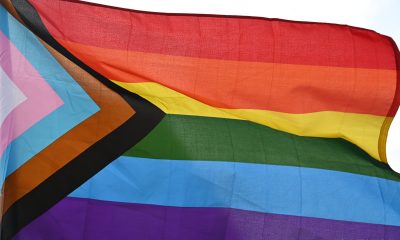Local
Protesters return to Smithsonian after ban lifted
‘Censored’ video triggered action; ‘Hide/Seek’ closes Sunday
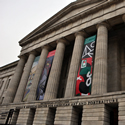
Two activists detained in December after protesting a decision by the Smithsonian Institution to remove a video from the “Hide/Seek” exhibit about gay art in America were officially permitted to return to the National Portrait Gallery, site of the exhibit, for a private tour sponsored by Washington Blade on Feb. 3.
After intervention by the Blade, David Ward, co-curator of the exhibit, agreed to seek an official end of the enforcement of any “ban” by Smithsonian security officials barring the two protesters — videographer/photographer Mike Iacovone, who is straight, and Mike Blasenstein, who is gay — from entering any Smithsonian museum. The two were detained following their protest of a decision in late November by Smithsonian Secretary Wayne Clough to remove a four-minute video, an extract from a longer video by the late gay artist David Wojnarowicz, who died of AIDS in 1993, showing for a few seconds ants crawling on a crucifix, imagery that a right-wing group, the Catholic League, claimed to be anti-Catholic.
They were detained when Blasenstein and Iacavone entered the National Portrait Gallery and Blasenstein displayed the video on an iPad hung around his neck. He was also holding a stack of fliers with text explaining his protest at the video’s removal from the exhibit. Iacaone was then also detained by Smithsonian police for filming Blasenstein’s run-in with security. Each was released but only after being made to sign letters pledging not to return to any Smithsonian facilities.
Explaining his decision to protest, Blasenstein later told the newsletter ArtInfo, that he joined in actions critical of the removal of the video because, he said, “I just felt this was an important issue.”
“I’m not really an artist or an activist,” Blasenstein said, “but when I heard that they took it down, it just seemed to send such a clear negative message. So I thought to myself, I would send my own message and bring this art back into the museum.”
Blasenstein later told the Blade that they were not only banned from the museum but during their detention they were “forcibly stripped of our materials, handcuffed, dragged into a stairwell, and told to sign papers thrust in front of us or be arrested.” They were then escorted from the building, he said, “without being given copies of what we had signed.”
Ward, an historian at the Portrait Gallery and co-curator of the exhibit with Jonathan D. Katz of the State University of New York in Buffalo, told the Blade that the ban was actually “never imposed” by the Smithsonian, but was instead “done by D.C. Metro,” the city’s police force, which was called to the scene, “without our knowledge or acquiescence.”
“They then passed the buck back to us to make us ‘lift’ a ban that wasn’t our doing,” he said. Ward personally welcomed both Iacovone and Blasentein to the exhibit for the private tour on behalf of the Blade, saying, “I hope this is the end of it.” He also stated he wanted to “move on” from the entire controversy over the edited video, one of 105 items in the exhibit, which opened in late November, and closes on Feb. 13.
Blasentein told the Blade that he never felt the ban was purely a paper reprimand, saying, “let me tell you, when everyone around you is wearing guns, nothing about the process feels ‘bureaucratic.'” He said that though “you could spend hours untangling this thing” Ward was correct to insist that the so-called ban was really triggered by the city’s police, but he added that “the sergeant I spoke to at MPD was pretty clear in his opinion that MPD doesn’t ban anybody, but merely enforces a ban on behalf of the property owner.” He also stressed that the Smithsonian management “to the best of our knowledge” never insisted on barring them from the museum. That action, he believes, “was solely a decision of Smithsonian police.”
Blasentein said that “the story here is not primarily our ban,” but rather the act of official censorship itself. However, he insists that “had we been allowed back into the building,” after the incident with the iPad and the leaflets, “our protest would have been a lot different.”
“The only reason a trailer is parked outside the National Portrait Gallery is because that was the closest we were legally allowed to get to the building. If the Smithsonian had let me stand there for seven and a half hours with the iPad, we would have mobilized volunteers to do the same every day until Feb.13,” the day the exhibit closes its doors.
Instead, Iacovone and Blasenstein secured paperwork from the city to park a trailer directly in front of the museum at its entrance in the 700 block of F Street, N.W., where what they call the Museum of Censored Art — to show “the art the Smithsonian won’t,” will remain open until Sunday from 11:30 a.m. to 7 p.m. Even though they can now legally enter the museum, Iacovone said their counter-exhibit in the trailers will continue to remain open, staffed by 12-15 volunteers through Sundayt.
Iacovone said they have spent more than $6,500 so far on trailer and parking space costs and for powering batteries to run the video player. He praised two art galleries — the Hamiltonian and Flashpoint, as well as two others, Transformer and Civilian — for assisting them in various ways. More than 4,000 people have entered the trailers and viewed the video, he said, noting that “our biggest day so far was over 500 people,” and he thinks by the time the Museum of Censored Art shuts down they will reach the 5,000-visitor mark.
The exhibit is the first on the subject of same-sex desire in American art and shows the work of noted artists Thomas Eakins and John Singer Sargent as well as more recent icons such as Jasper Johns, Andy Warhol and Robert Mapplethorpe, the latter a photographer whose photo images showing explicit male sexuality caused the Corcoran Gallery to halt the exhibit planned of his work more than 20 years ago.
Smithsonian secretary G. Wayne Clough, the official responsible for the decision to order removal of the video, part of a larger work in 1987 called “A Fire in My Belly,” meanwhile, has been the target of calls for him to resign in the wake of that decision. Last week, about 30 protesters rallied outside the Smithsonian Castle on the Mall during a quarterly meeting of the Smithsonian Board of Regents, to demand that they fire him.
Organized by Art+ (positive), a New York City-based group that fights censorship and homophobia, and backed also by the activist group, People For the American Way, protesters declared that Clough had given in to right-wing pressures and should step down. They chanted “Hey, hey, ho, ho, Clough must go!” and “Ants in my pants, fire in my belly — Clough has got to go!”
The regents, however, announced after their meeting that they supported Clough, though even he subsequently acknowledged that perhaps it had been made in haste and that he would respond differently in the future.
“I’d like to think I’m a little wiser than I was six months ago or three months ago,” he said at a news conference following the meeting with the regents, which reviewed the entire controversy and then issued a statement backing him. However, a three-member panel reporting to the regents implicitly criticized the way the censorship decision was made and communicated. And regents repeatedly asked by reporters whether Clough had made the right decision refused to answer directly.
Another rebuke, this time more direct, came from the board of a Smithsonian member institution, the Hirshhorn Museum and Sculpture Garden, that met last week and issued an open letter, saying they were “deeply troubled by the precedent” of the November decision to pull the video from the show.
Virginia
Walkinshaw wins Democratic primary in Va. 11th Congressional District
Special election winner will succeed Gerry Connolly
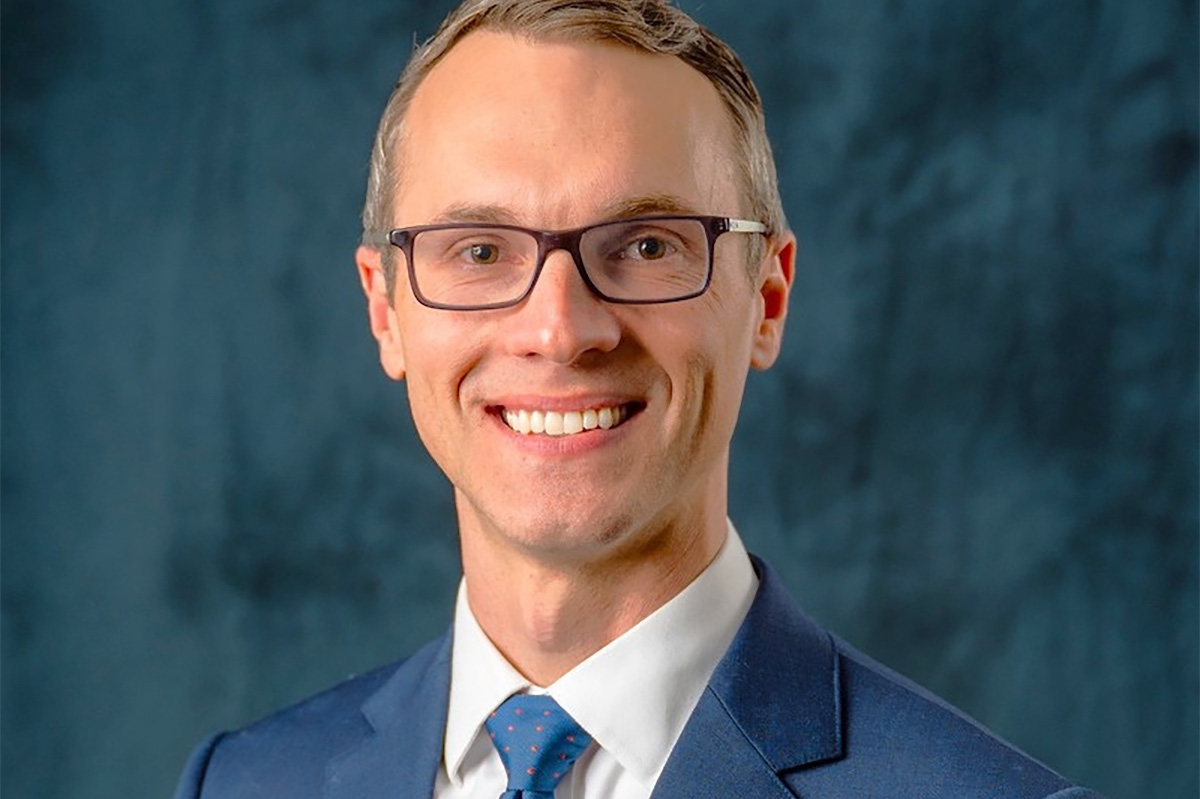
On Saturday, Fairfax County Supervisor James Walkinshaw won the Democratic primary for the special election that will determine who will represent Virginia’s 11th Congressional District.
The special election is being held following the death of the late Congressman Gerry Connolly, who represented the district from 2008 until 2024, when he announced his retirement, and subsequently passed away from cancer in May.
Walkinshaw is not unknown to Virginia’s 11th District — he has served on the Fairfax County Board of Supervisors since 2020 and had served as Connolly’s chief of staff from 2009 to 2019. Before he passed away, Connolly had endorsed Walkinshaw to take his place, claiming that choosing Walkinshaw to be his chief of staff was “one of the best decisions I ever made.”
The Democratic nominee has run his campaign on mitigating Trump’s “dangerous” agenda of dismantling the federal bureaucracy, which in the district is a major issue as many of the district’s residents are federal employees and contractors.
“I’m honored and humbled to have earned the Democratic nomination for the district I’ve spent my career serving,” Walkinshaw said on X. “This victory was powered by neighbors, volunteers, and supporters who believe in protecting our democracy, defending our freedoms, and delivering for working families.”
In addition to protecting federal workers, Walkinshaw has a long list of progressive priorities — some of which include creating affordable housing, reducing gun violence, expanding immigrant protections, and “advancing equality for all” by adding sexual orientation and gender identity to the Fair Housing Act.
Various democratic PACs contributed more than $2 million to Walkinshaw’s ad campaigns, much of which touted his connection to Connolly.
Walkinshaw will face Republican Stewart Whitson in the special election in September, where he is the likely favorite to win.
Maryland
LGBTQ suicide prevention hotline option is going away. Here’s where else to go in Md.
Changes will take effect July 17

By ANNA RUBENSTEIN | The national suicide prevention hotline will no longer offer specialized support to LGBTQ people, starting July 17, the Trump administration announced last week.
Dialing the hotline at 988 will still be available for crisis support. But callers will no longer be able to reach specific LGBTQ services by pressing Option 3. The change worries advocates because their data shows the LGBTQ community has a disproportionally high suicide rate.
Even after the option ends, here’s how to receive tailored support if you’re in Maryland.
The rest of this article can be found on the Baltimore Banner’s website.
Maryland
Silver Spring holds annual Pride In The Plaza
‘Today means inclusion. It means to build resilience’
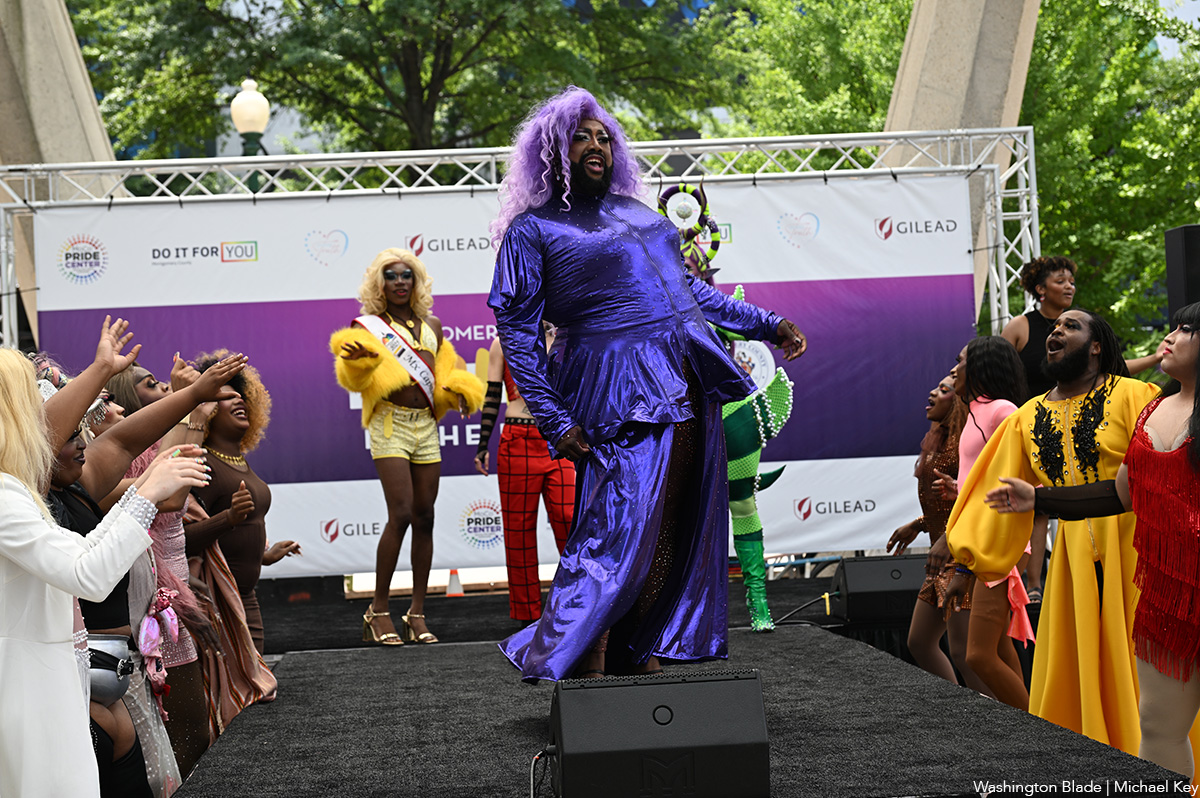
Silver Spring’s annual Pride in the Plaza event took place on Sunday to celebrate the LGBTQ community and emphasize inclusion and resilience.
“Today means inclusion. It means to build resilience, love,” Robyn Woods, program and outreach director for Live In Your Truth, which organized the event, said. “I mean, just being surrounded by the community and so many great entrepreneurs, business owners, and just being a part of this whole rainbow coalition that we call the LGBTQIA to be about.”
With the event being her first time organizing for Live In Your Truth, Woods said she felt emotional to see the support and love at the event.
“Some people (are) bringing out their children, their babies, their grandparents,” Woods said. “It’s a lot more allies here than anything else. That type of support to me means so much more than just support from my community; just outside support, inside support, so much support around it, so much love. Everyone’s smiling outside, helping each other.”
Attendees of the event were able to head over to the Family Fun Zone, an air-conditioned Pride Cool Down Lounge, or watch live drag performances in the main stage area.
Along with entertainment and a shaved-ice stand, rows of information tables stood along the plaza, including FreeState Justice, the Washington Spirit, Trans Maryland, Moco Pride Center, and the Heartwood Program, an organization that offers support, therapy, education, and resources to the LGBTQ community.
“I want people to know about our services, and I love what we have to offer,” Jessica Simon, psychotherapist for Heartwood Program’s Gender Wellness Clinic, said. “I (also) want to be part of a celebration with the community, and so it feels good to be here with other people who have something they want to give to the community.”
She added that within today’s political climate, to which she called an “antidote to shame,” it’s important to be celebrating Pride.
“There’s a lot of demonization of LGBTQI people,” Siena Iacuvazzi, facilitator for Maryland Trans Unity, said. “(Pride) is part of the healing process.”
Iacuvazzi said she was taught to be ashamed of who she was growing up, but being a part of a community helped her flourish in the future.
“I was taught how to hate myself. I was taught that I was an abomination to God,” she said. “But being a community is like understanding that there are people who have experienced the same thing, and they’re flourishing. They’re flourishing because they’re willing to stand up for themselves as human beings and discover themselves and understand what’s true for themselves.”
She added that Pride allows for a mutual understanding to take place.
“It’s more of a sense of belonging … and just taking that home and understanding you’re not alone,” Iacuvazzi said. “We’re each taking our own journey — we’re not putting that on each other. It’s just walking away with a sense of belonging and humanity.”
Similar to Iacuvazzi, Woods said she hopes attendees’ biggest takeaways would be family, fun, resilience, and pride.
“Being proud of yourself, being happy for who you are, and representation and how much it matters,” she continued. “And I think all these young people that are walking around here get to see versions of themselves, but older. They get to see so many different lesbian, gay, bisexual, pansexual people that are successful, that are showing love, that care, and it’s not how we’re portrayed in the media. It’s lovely to see it out here. (It’s) like we’re one big old, happy family.”
-

 U.S. Supreme Court5 days ago
U.S. Supreme Court5 days agoSupreme Court upholds ACA rule that makes PrEP, other preventative care free
-

 U.S. Supreme Court5 days ago
U.S. Supreme Court5 days agoSupreme Court rules parents must have option to opt children out of LGBTQ-specific lessons
-

 Television5 days ago
Television5 days ago‘White Lotus,’ ‘Severance,’ ‘Andor’ lead Dorian TV Awards noms
-
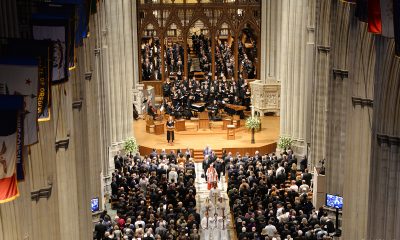
 Music & Concerts5 days ago
Music & Concerts5 days agoBerkshire Choral to commemorate Matthew Shepard’s life





